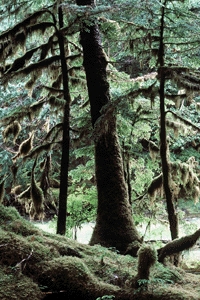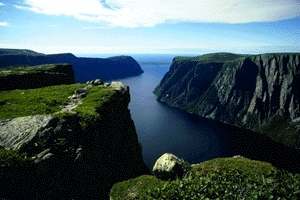
|
|
|
| Quick Links | Educational Resources | Contact Us Parks Canada National Office
25 Eddy Street
Gatineau, Quebec
Canada
K1A 0M5
Email:
information@pc.gc.ca
|
|
 |
National Parks of Canada
Ecological Integrity
What is Ecological Integrity?
According to the Canada National Parks Act, the law governing national parks in Canada, "ecological integrity" means, with respect to a park, "…a condition that is determined to be characteristic of its natural region and likely to persist, including abiotic components and the composition and abundance of native species and biological communities, rates of change and supporting processes."
 Green frog in a marsh at Point Pelee National Park of Canada
© Parks Canada / Wilkes, D. A. / 06.62.10.11(01), 1987
Green frog in a marsh at Point Pelee National Park of Canada
© Parks Canada / Wilkes, D. A. / 06.62.10.11(01), 1987
|
In plain language, ecosystems have integrity when they have their native components intact, including: abiotic components (the physical elements, e.g. water, rocks), biodiversity (the composition and abundance of species and communities in an ecosystem, e.g. tundra, rainforest and grasslands represent landscape diversity; black bears, brook trout and black spruce represent species diversity) and ecosystem processes (the engines that makes ecosystem work; e.g. fire, flooding, predation).
Parks Canada's objective is to allow people to enjoy national parks as special places without damaging their integrity. In other words, ecological integrity is our endpoint for park management; ecosystem management is the process used to get there.
For national parks, ecosystem management considers the following:
- Ecological integrity should be assessed with an understanding of the regional evolutionary and historic context that has shaped the system. For example, past occupation of the land by Aboriginal People should be taken into account when managing for ecological integrity of a national park;
- Because ecosystems are constantly changing, conservation strategies should maintain or restore key ecological processes that reflect their natural condition. For example, prescribed burning is used as a way to reintroduce fire in national parks;
- National parks are part of larger ecosystems and must be managed in that context; Parks Canada recognizes the need to integrate parks into their surrounding landscape so that parks do not function as isolated islands;
-

Old-growth forest in Gwaii Haanas National Park Reserve
© Parks Canada / Lynch, W. / 10.105.03.06(14), 1988.
|
Populations of species should be managed to levels that have a high likelihood of maintaining themselves;
- Ecosystems have characteristic rates of change. Understanding rates and direction are critical to understanding the system. For example, Parks Canada is studying the impacts of climate change on national parks to anticipate the effects that it may have on their ecological integrity;
- Parks have a limited capacity to withstand use. Visitors are welcome to visit them and human use and facilities should be compatible with park ecosystem protection in type, amount and timing;
-

Coastal view in Gros-Morne National Park of Canada, NF
© Parks Canada / Grant, T / 01.11.03.20(60), 1977
|
Ecological integrity must be assessed and understood at a landscape scale. While ecological integrity cannot be assessed at the scale of a single forest stand, campground, or parking lot, it can be impacted at any scale;
- The goal of conserving ecological integrity is best addressed by maintaining or restoring the diversity of genes, species and communities native to the region. It is simply consistent with the vision of integrity, which is "wholeness" - if parts are missing, the ecosystem is not whole.
|




